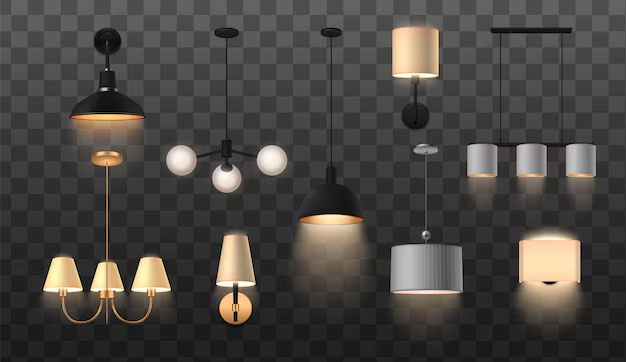Lighting plays a crucial role in the overall ambiance, functionality, and design of a living room. Whether you’re entertaining guests, watching a movie, reading, or simply relaxing, the right lighting can enhance your living space’s mood and usability. Living room lamps, in particular, are a versatile and essential component in any lighting scheme. This ultimate guide will explore how to choose and arrange living room lamps to create the perfect lighting setup.
Why Lighting Matters in Your Living Room
Lighting is more than just a functional necessity; it’s an integral part of your living room’s design. The right lighting can:
- Enhance Ambiance: Set the mood for various activities, from bright and vibrant for social gatherings to soft and warm for cozy evenings.
- Highlight Decor: Emphasize architectural features, artwork, and furniture, making your living room appear more dynamic and interesting.
- Improve Functionality: Provide task lighting for activities like reading, working, or hobbies, ensuring your living room is not just beautiful but also practical.
Given its importance, selecting the right living room lamps involves more than just picking out a stylish piece. It’s about understanding the different types of lighting, choosing the right lamp styles, and arranging them effectively.
Understanding the Different Types of Lighting
To create the perfect lighting in your living room, it’s essential to understand the three main types of lighting:
1. Ambient Lighting
Ambient lighting is the primary source of light in a room, providing overall illumination. This type of lighting sets the general mood and allows you to see and move around comfortably. In a living room, ambient lighting typically comes from ceiling fixtures, such as chandeliers, pendant lights, or recessed lighting. However, floor lamps and large table lamps can also contribute to ambient lighting.
2. Task Lighting
Task lighting is focused and intense, designed to illuminate specific areas for particular tasks, such as reading, working, or playing games. Task lighting in the living room often comes from table lamps, floor lamps with adjustable arms, or wall-mounted reading lights. Task lighting should be bright enough to prevent eye strain but not so intense that it creates harsh shadows or glare.
3. Accent Lighting
Accent lighting is used to highlight specific objects or architectural features in your living room, such as artwork, plants, or bookshelves. This type of lighting is typically softer and less intense than task lighting, creating a focal point and adding depth to your living room design. Wall sconces, picture lights, and small table lamps can all serve as accent lighting.
Choosing the Right Living Room Lamps
When selecting lamps for your living room, consider the style, function, and placement to ensure they enhance both the aesthetic and usability of the space.
1. Table Lamps
Table lamps are versatile and can serve as both task and accent lighting. They are perfect for placing on side tables, console tables, or shelves. When choosing table lamps, consider the following:
- Height: Ensure the lamp is the right height for the table it will sit on. The bottom of the lampshade should be at eye level when you are seated to avoid glare.
- Style: Match the lamp’s style with your living room’s overall decor. For example, a sleek, modern lamp works well in a contemporary setting, while a traditional lamp with intricate details suits a classic interior.
- Shade: The shade material and color affect the light’s intensity and direction. A translucent shade provides soft, diffused light, while an opaque shade directs light downward, making it ideal for task lighting.
2. Floor Lamps
Floor lamps are excellent for providing ambient lighting, especially in areas where ceiling fixtures are insufficient or nonexistent. They can also serve as task lighting when placed next to a reading chair or sofa. When selecting a floor lamp, consider:
- Height and Proportion: The height of the floor lamp should complement the room’s scale and the furniture around it. Taller lamps work well in rooms with high ceilings, while shorter lamps are better for cozier spaces.
- Base and Stability: Ensure the lamp has a sturdy base, particularly if you have pets or children who might knock it over.
- Style: Choose a floor lamp that complements your living room’s style. Arc floor lamps, for example, offer a modern, sculptural look, while tripod lamps add a mid-century touch.
3. Wall Lamps and Sconces
Wall lamps and sconces are perfect for adding ambient or accent lighting without taking up floor or table space. They’re particularly useful in smaller living rooms or to highlight artwork and architectural features. When choosing wall lamps or sconces:
- Placement: Install wall lamps at eye level to avoid glare. Consider placing them on either side of a mirror, artwork, or fireplace to create symmetry.
- Functionality: Some wall lamps are adjustable, making them ideal for task lighting. Choose a style with a flexible arm if you need the light to be directed at different angles.
- Style: Wall lamps come in a variety of styles, from minimalist and modern to ornate and traditional. Choose a style that complements your living room’s decor and existing light fixtures.
4. Pendant Lights
Pendant lights can serve as both ambient and accent lighting, depending on their size, design, and placement. In the living room, they are often used to highlight specific areas, such as a seating arrangement or a reading nook. When choosing pendant lights:
- Height: Pendant lights should hang at a height that provides enough light without obstructing the view or causing glare. Typically, they should be hung 30-36 inches above a table or seating area.
- Size: The size of the pendant light should be proportional to the space. Large pendants work well in spacious living rooms, while smaller ones are better suited for intimate settings.
- Design: Pendant lights come in a variety of designs, from sleek and modern to rustic and industrial. Choose a style that complements your living room’s decor.
5. Chandeliers
Chandeliers are statement pieces that provide ambient lighting and add a touch of elegance to your living room. They are ideal for rooms with high ceilings or as a focal point in a larger space. When selecting a chandelier:
- Size and Scale: The chandelier should be proportional to the size of the room and the furniture beneath it. A large chandelier in a small room can be overwhelming, while a small chandelier in a large room can look out of place.
- Height: Hang the chandelier high enough to allow for comfortable movement beneath it, typically 7-8 feet from the floor.
- Style: Choose a chandelier that complements your living room’s design, whether it’s a traditional crystal chandelier or a modern, minimalist fixture.
Arranging Your Living Room Lamps
Once you’ve selected the right lamps for your living room, it’s important to arrange them in a way that maximizes their effectiveness and enhances the room’s overall design.
1. Layer Your Lighting
A well-lit living room features a combination of ambient, task, and accent lighting, layered throughout the space. Start with ambient lighting, such as ceiling fixtures or large floor lamps, to provide general illumination. Then, add task lighting with table lamps or adjustable floor lamps in areas where specific activities take place, such as reading corners or workspaces. Finally, incorporate accent lighting with wall sconces or small table lamps to highlight artwork, architectural features, or decorative objects.
2. Create Balance and Symmetry
To create a cohesive look, arrange your lamps in a balanced and symmetrical manner. For example, place matching table lamps on either side of a sofa or console table, or use a pair of wall sconces to frame a fireplace or mirror. Balance doesn’t necessarily mean identical lamps; you can mix different styles and sizes, as long as the overall arrangement feels harmonious.
3. Consider the Flow of the Room
When arranging your living room lamps, consider the room’s layout and how people move through the space. Ensure that floor lamps and table lamps don’t obstruct pathways or create awkward shadows. If you have a central seating area, arrange your lamps to provide even lighting across the space, avoiding dark corners or overly bright spots.
4. Highlight Focal Points
Use your lamps to draw attention to key areas or focal points in your living room. For example, position a floor lamp next to a reading chair to create a cozy nook, or place a table lamp on a side table to illuminate a beautiful piece of artwork. Accent lighting can also be used to highlight architectural features, such as a fireplace or built-in shelving.
5. Use Dimmers and Smart Lighting
Dimmers and smart lighting solutions allow you to adjust the brightness of your lamps to suit different activities and moods. For example, you can lower the lights for a movie night or brighten them for reading or entertaining. Smart lighting systems also enable you to control your lamps remotely, set schedules, and create lighting scenes, adding convenience and flexibility to your living room lighting.
Tips for Choosing the Right Bulbs
The type of bulb you choose for your living room lamps can significantly impact the quality and ambiance of the lighting. Consider the following factors when selecting bulbs:
1. Brightness
Brightness is measured in lumens. For general ambient lighting, look for bulbs with a brightness of around 800-1000 lumens. For task lighting, choose brighter bulbs with 1000-1500 lumens. For accent lighting, lower brightness levels of 400-600 lumens are usually sufficient.
2. Color Temperature
Color temperature, measured in Kelvins (K), determines the warmth or coolness of the light. For a cozy, inviting atmosphere in your living room, opt for warm white bulbs with a color temperature of 2700-


